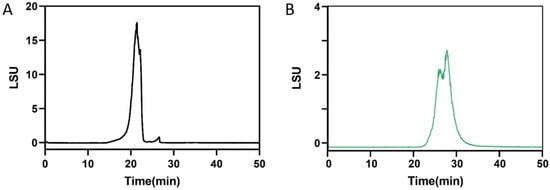- Article
Structural Comparison and Therapeutic Effects on Ulcerative Colitis of Fucoidan and Its Derivative from Saccharina japonica
- Yanlei Yu,
- Xiaoshu Jin and
- Yunjie Zhao
- + 5 authors
Ulcerative colitis (UC) is a chronic inflammatory bowel disease (IBD) that can lead to intestinal complications and systemic risks, significantly increasing the likelihood of colorectal cancer in individuals with long-term illness. Fucoidan has shown potential in alleviating UC; however, the structure–activity relationship remains challenging. The present study aims to compare fucoidan (CF) and its degraded derivatives (DF) in the prevention and treatment of UC. Structural analysis demonstrated that CF and DF possess similar monosaccharide compositions and sulfation content; however, they differ significantly in molecular weight, with CF measuring 582 kDa and DF 2.3 kDa. Additionally, DF display a lower degree of branching compared to CF. Results from the mouse model demonstrated that both CF and DF can effectively alleviate clinical symptoms of UC; however, the underlying mechanisms of action are likely to differ. Both CF and DF produced comparable improvements in the disease activity index. CF demonstrated superior efficacy in alleviating weight loss and maintaining colon length, whereas DF showed greater benefits in protecting the colonic mucosa and reducing inflammatory infiltration. The gut microbiota analysis indicated that DF was more effective in restoring microbial diversity in UC mice. Both CF and DF were capable of modulating microbial imbalances at the phylum and genus levels, although the specific taxa exhibited differences.
3 November 2025




![Transmission electron micrograph of the gill of Bathymodiolus japonicus shows a bacteriocyte harboring symbionts. Inset shows a higher-magnification micrograph of symbiosome (arrow) containing symbiont in other bacteriocyte. Experimental procedures were performed as described in Tame et al., 2023 [23]. The sections were observed using a H-7650 electron microscope (Hitachi) operated at 100 kV. n, nucleus; sy, symbiont. Scale bar, 1 μm.](/_ipx/b_%23fff&f_webp&q_100&fit_outside&s_281x192/images/placeholder.webp)

